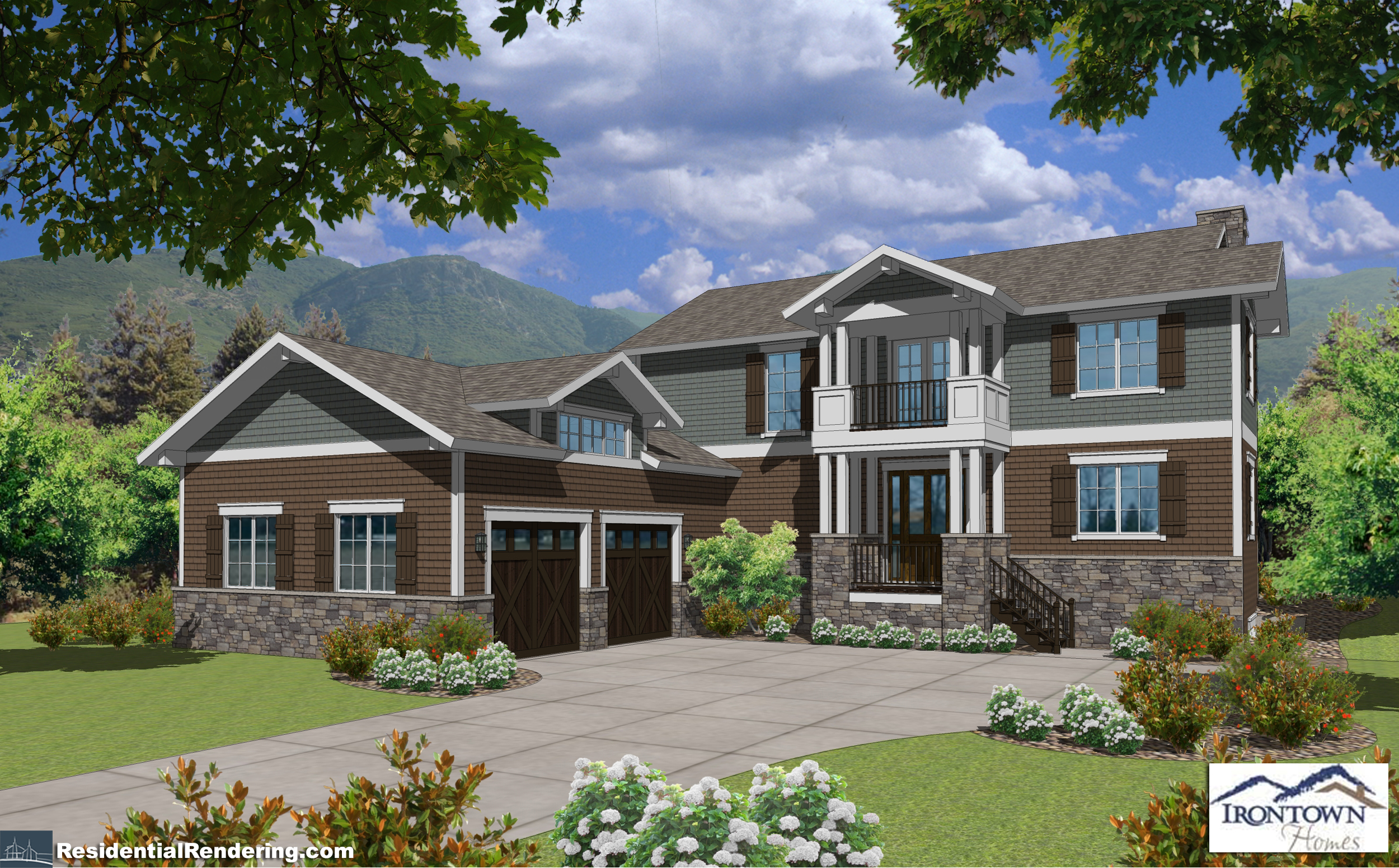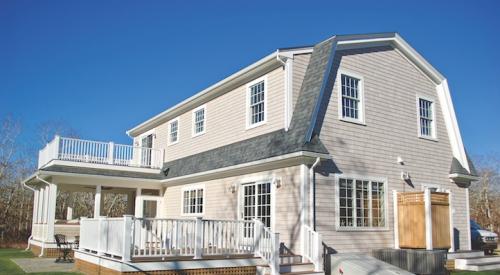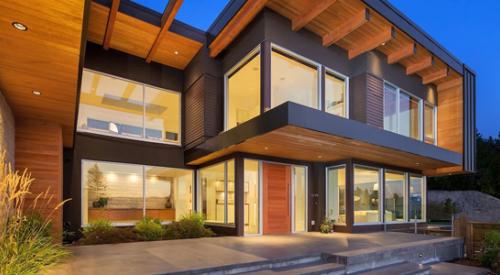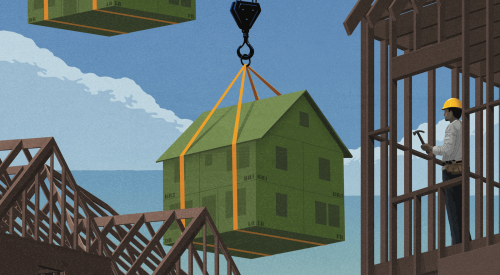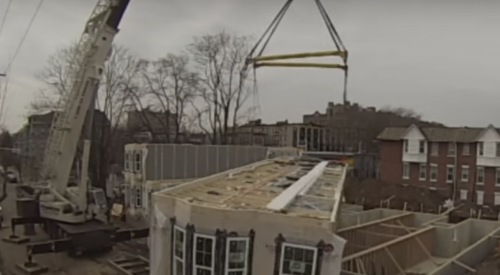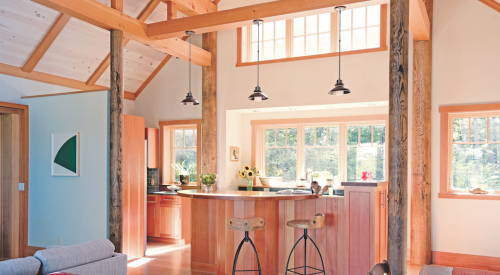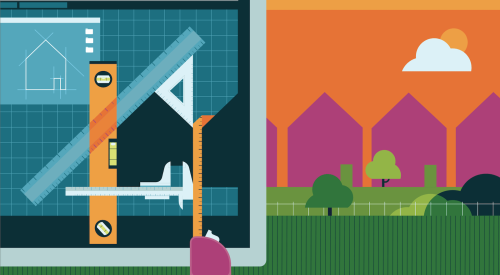
Factory-built housing has come a long way from mobile homes, considering that Irontown Homes sells seven-figure modular mansions. The company was founded in 1984 and began constructing custom modular single-family homes during the mid-1990s. Today, those modules are built in a 60,000-square-foot factory where a custom prefab home can take 15 weeks to get to 90 percent complete compared with a year or longer out in the field.
Although manufactured housing’s share of the new construction, single-family residential market bounced between 9 percent and 11 percent during the period from 2010 to 2014, shipments of modular single-family houses jumped 48 percent to 30,220 units during the same period, according to the U.S. Census Bureau.
Irontown transports its modules within a 1,000-mile radius of the factory to home sites in California, Colorado, Idaho, Montana, Utah, and Wyoming.
Q: Are you seeing modular building activity increasing? Why?
A: Absolutely. Each year, we see our month-to-month leads increasing. The slow and steady effort by the industry to boost the visibility of permanent modular construction as an alternative to site building has really been apparent in our business. I think a lot of the old stigmas of manufactured buildings that have been turning higher-end buyers away from modular construction are being defeated with increased client education. Also, trade associations such as the MHBA [Modular Home Builders Association] and the Building Systems Council of the NAHB are helping to pave the way through their efforts.
Q: What are the top selling points that persuade buyers to choose modular over stick-built?
A: Time and money. Buyers want the same quality in a shorter period of time and for less money. Time savings are nearly always achieved due to the nature of factory processes vs. site processes. Costs are normally lower with modular construction as well, but vary by the location and economic conditions of both the project and of the factory. Even if cost savings aren’t huge, there’s still a compelling benefit in time savings. Quality level, which used to be more of a concern for buyers, is actually a huge selling point for our clients. We can achieve a higher level of quality in the factory-controlled environment than what’s normally available or affordable with on-site labor. There are really a lot of pluses to building modular.
Q: Is modular home building making inroads at home sites with dense, side-by-side lots?
A: Access to the site is always a key part of the decision. If we can’t get the mods there, then we can’t do the job; it’s that simple. We always do a site assessment prior to beginning construction on a project to ensure that first, we can get it there, and second, we can plan for the needed resources. A lot of what we do is urban infill. There are significantly more challenges in a tight area, but if it fits, it fits. We’ve set homes in the past that have had 3-foot side setbacks and 5-foot rear setbacks, lifting over and under power lines, over existing homes, avoiding precious trees, etc. It’s really decided on a case-by-case basis.
Q: Are you dealing with labor shortages or does being a modular builder in a factory setting give you an advantage with hiring and keeping the trades?
A: Tradesmen like to work in the shop rather than out in the weather and mud. It’s not the driving factor—money normally is—but a factory setting is an important plus. There are some unique sequences and techniques we use in the factory that are not done in site-built construction, but they’re easily taught by our management team. Labor shortages affect the entire industry, but stability and environment are big pluses in a factory setting.
Q: What is the predominant myth or preconceived notion about modular homebuilding that you contend with?
A: I would say flexibility and quality. Modular projects are not defined by how many ways you can stack a shoebox. Most of our projects are compositions of modules, panels and other components like hinged eaves, dormers, and roof components. This offers massive flexibility and variety to come out of a factory. Also, any climate zone and any structural loading can be accomplished depending on the flexibility of the factory. Again high quality can also be achieved; it’s just a matter of business decisions. A question was once asked why the modular/manufactured home industry is so plagued by quality concerns. My answer was that it’s completely driven by business decisions. If a low price is desired by the buyer and provided by the factory, lower quality materials and faster labor will be used. This is the model of some builders. If a higher price and higher quality is desired, the materials and labor are used, and the project is higher quality. It’s really between the buyer and factory. What product is desired? Much of the industry is being dominated by a desire for low cost. Many businesses, like Irontown Homes, do not offer lower quality, low cost buildings. Our pricing is often surprising to customers, but when they see what we build, the pricing makes sense.
